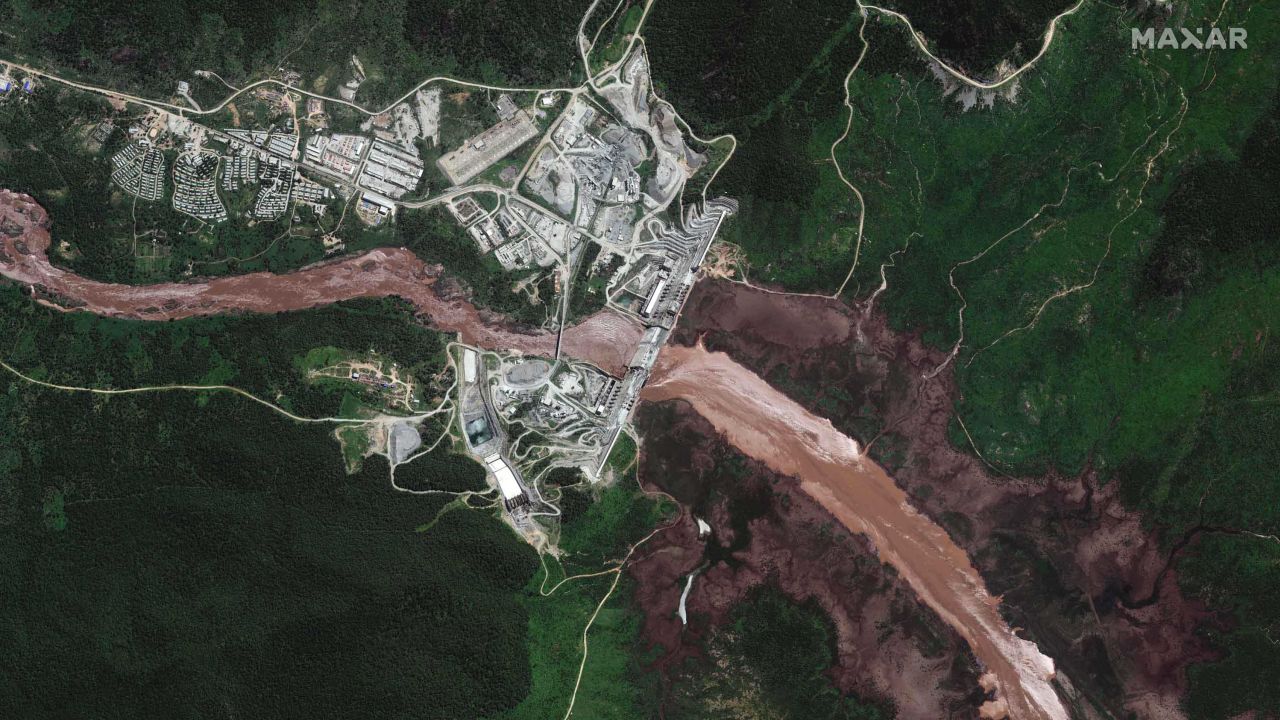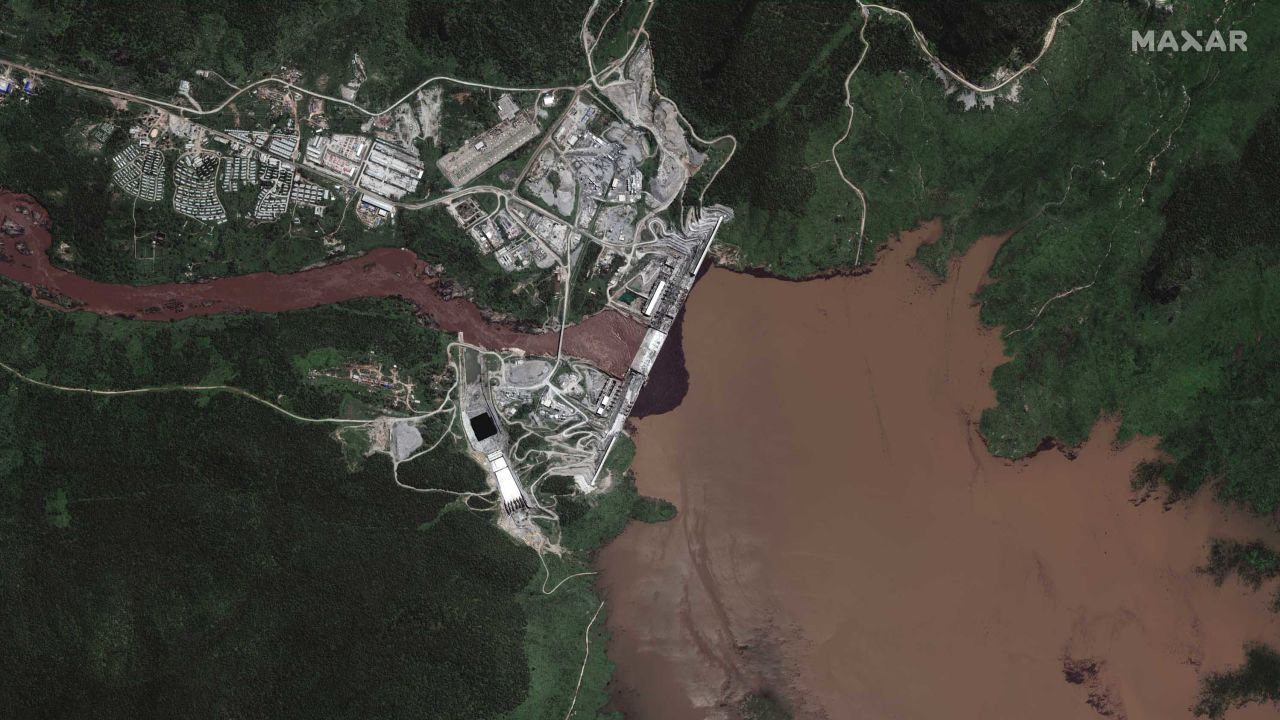Nine years of talks and several fragile agreements over how to share the water of the world’s longest river were almost thrown out of the window last week — all because of a bout of heavy rain.
Satellite images released last Tuesday by the US-based company Maxar Technologies showed water pooling in a reservoir behind a controversial dam on the Blue Nile in Ethiopia, prompting officials in Egypt to demand urgent clarification and those in neighboring Sudan to complain that water levels were dropping along the river.
It now seems that heavy rains had caused the reservoir to swell, but as Ethiopia has repeatedly said it will fill the dam with or without a deal with the other two nations, the images had authorities in Egypt and Sudan worried. If Ethiopia does begin filling the dam at a rapid pace, they fear it could have profound effects on their own water supplies.
On the same day, the three nations had failed to reach an agreement over how the project should proceed, as the latest round of talks crashed out.
The Grand Ethiopian Renaissance Dam (GERD), an ambitious $4.5 billion hydropower project, is emblematic of Ethiopia’s goal to become a key regional player.
It aims to provide electricity to around 60% of Ethiopian households which are so far not covered by the power grid, and is part of Prime Minister Abiy Ahmed’s vision to transform the country into a major regional exporter of energy.
Without electricity, many Ethiopians rely on shrinking forests for firewood, while the 40% of the country which is technically connected to the grid suffers from disruptive power cuts, Birhanu Lenjiso, co-founder of the East African Policy Research Institute, told CNN.
“It is a very dire situation. It’s a very sad situation that we have been living like that for centuries when we actually contribute about 85% of the Nile water and we are not using any of that water,” he added.
But to Egypt, the dam threatens one of its most precious resources. Most of Egypt’s 102 million people live in the narrow Nile valley, along the river, and depend on it for everything from drinking water to industrial use and irrigation.
“My father and grandfather have lived by the Nile and my children and grandchildren will live by the Nile,” Ahmed Abdel-Wahab, a farmer from southern Egypt, told CNN. He speculated that the dam could lead to a 60% drop in his annual crops and an increase in water costs. “We are very worried. All farmers are worried,” he said.
Sudan would mostly benefit from the dam’s low-priced electricity and a steady water flow that will reduce flooding and increase irrigation, according to the International Crisis Group. But its proximity to the project – just 12.5 miles from its border with Ethiopia – could make its own Roseires Dam vulnerable to flooding, without proper coordination.
Speaking to CNN, Ethiopia’s Minister for Water, Irrigation and Energy Seleshi Bekele dismissed earlier reports that the country had started filling the reservoir, saying that rainfall had cause “pooling” there.
Seleshi said the active filling of the dam would begin in two years, when construction works are completed – indicating that there is still time for more talks.
Analysts agree that the water seen in the satellite images is most likely rainfall.
“Because the dam has reached quite an advanced stage of construction there had already been a natural backing up of the river behind it, due to the rainy season,” William Davison, the International Crisis Group’s senior Ethiopia analyst told CNN from Ethiopia’s capital, Addis Ababa.
Managing the world’s longest river
It’s unsurprising that managing the waters of the Nile is a complicated affair. The river stretches over 4,100 miles and flows through 11 countries.
The Blue Nile, the artery that gives the river more than 80% of its waters, begins in Lake Tana in Ethiopia. It meets the main stream, the White Nile, in Khartoum, Sudan, and then flows on through to Egypt and out to the Mediterranean Sea.
Much of the negotiations now are about the timeframe for filling the dam, the speed at which it will be filled, and how to mitigate drought. Ethiopia initially proposed filling the dam in three years, while Egypt wanted it done over the course of 10 to 15 years.
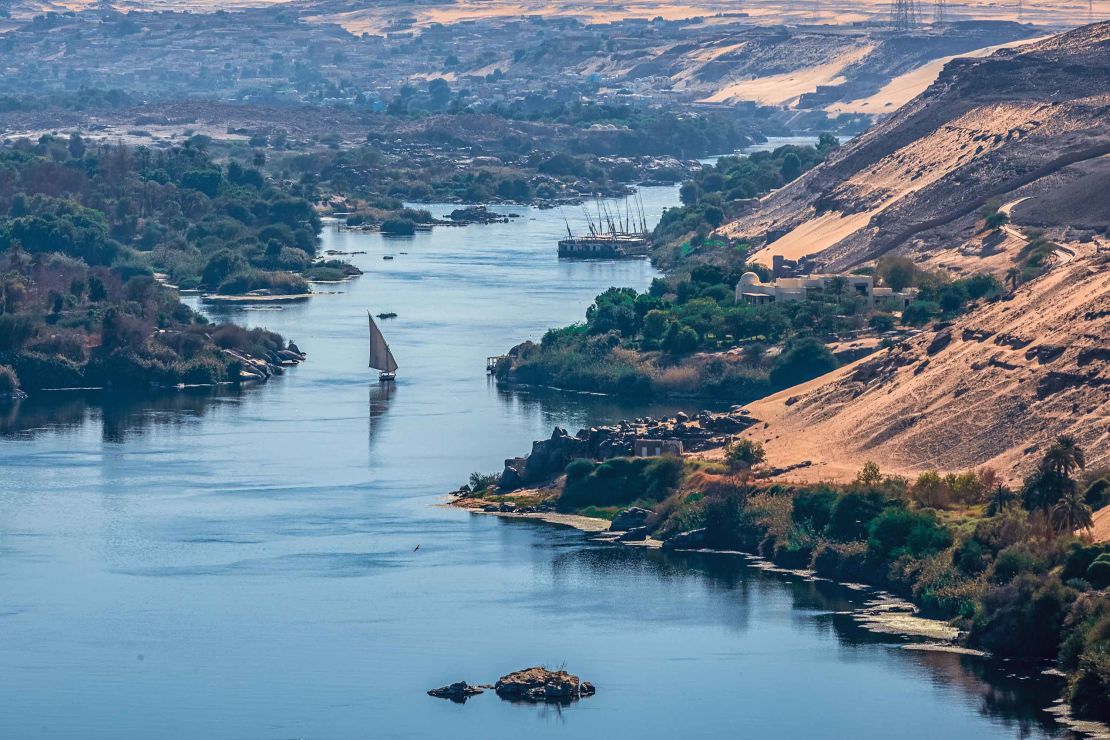
There has since been a verbal agreement to fill the dam in eight years, Hafsa Halawa, non-resident scholar at the Washington DC-based Middle East Institute, told CNN.
Egypt worries a speedy filling will lead to a drop in the amount of water reaching its portion of the Nile.
Egypt’s former irrigation minister told the BBC in 2018 that a 2% drop in Nile water would lead to the loss of 200,000 acres of farmland and 1 million jobs. But the exact impact of the dam on downstream flows remains unknown.
All three countries have so far failed to agree on who would conduct the required environmental studies, what access to give researchers, and how binding the results should be.
Then comes the issue of what would happen if a prolonged drought hit the region.
With a heavy rain season and agreement in principle on an eight-year filling schedule, there are no immediate problems on the horizon, but Cairo worries that a future drought, or other potential projects, would disrupt the flow of water along the Nile.
Ethiopia is keen for all parties to do their own drought mitigation, such as Egypt using its own reserves in its High Aswan Dam, Davison told CNN.
It also wants to tackle problems as they come up, and – as far as possible – not commit to predetermined agreements, such as releasing specified amounts of water downstream from its reservoirs during dry periods, he added.
“The sticking point continues to be the future,” Halawa said. “Ethiopia continues to look at these negotiations as a pathway to agree on the GERD management and fill. It doesn’t view these as a broader water security and water sharing agreement. Egypt does. And that’s fundamentally the legal and technical difference.”
Colonial-era agreements
Agreements signed in 1929 and 1959 gave Egypt and Sudan the lion’s share of the Nile’s water. Ethiopia has dismissed them as colonial-era deals; it signed a deal in 2010 with six other Nile basin countries that stripped Egypt and Sudan of the power to veto river projects.
“While we acknowledge Ethiopia’s right to development, the water of the Nile is a question of life, a matter of existence to Egypt,” Egyptian President Abdel-Fattah el-Sisi told the United Nations last year.
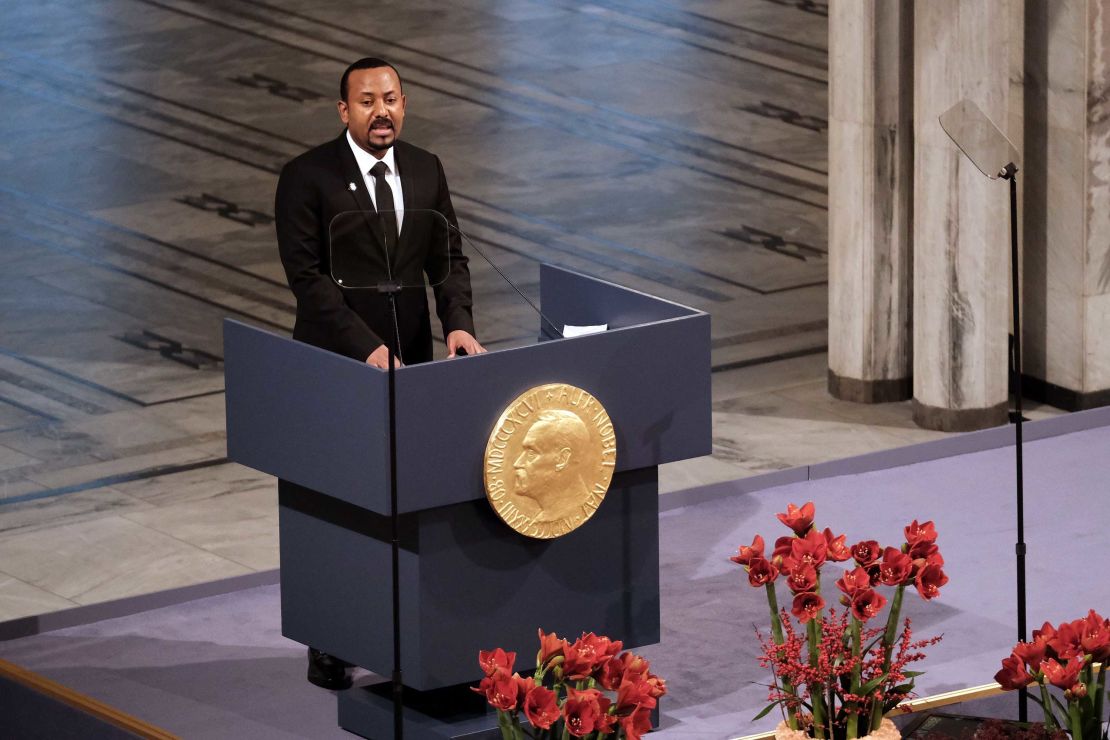
Earlier this year, Sisi relied on US mediation in the hopes of reaching an agreement, but Ethiopia pulled out of the Trump-sponsored talks, claiming a deal proposed by the US included drought mitigation proposals that favored Cairo.
“Addis Ababa argued the deal would commit it to drain its dam’s reservoir to unacceptably low level in the event of prolonged drought, while legally obligating it not to start filling the GERD’s reservoir without a deal,” according to analysis by the International Crisis Group.
“Ethiopia will never sign on an agreement that will surrender its right to use the Nile River,” Ethiopia’s Ambassador to the US, Fitsum Arega, said.
The latest attempt to bring the countries to the negotiating table was in June, under the African Union Leadership with the United Nations Security Council closely monitoring developments.
A national unity project
In Ethiopia, the success of the GERD project is seen as essential not only to elevate the country’s role in the region, but also to unite a fractured nation wracked by ethnic violence.
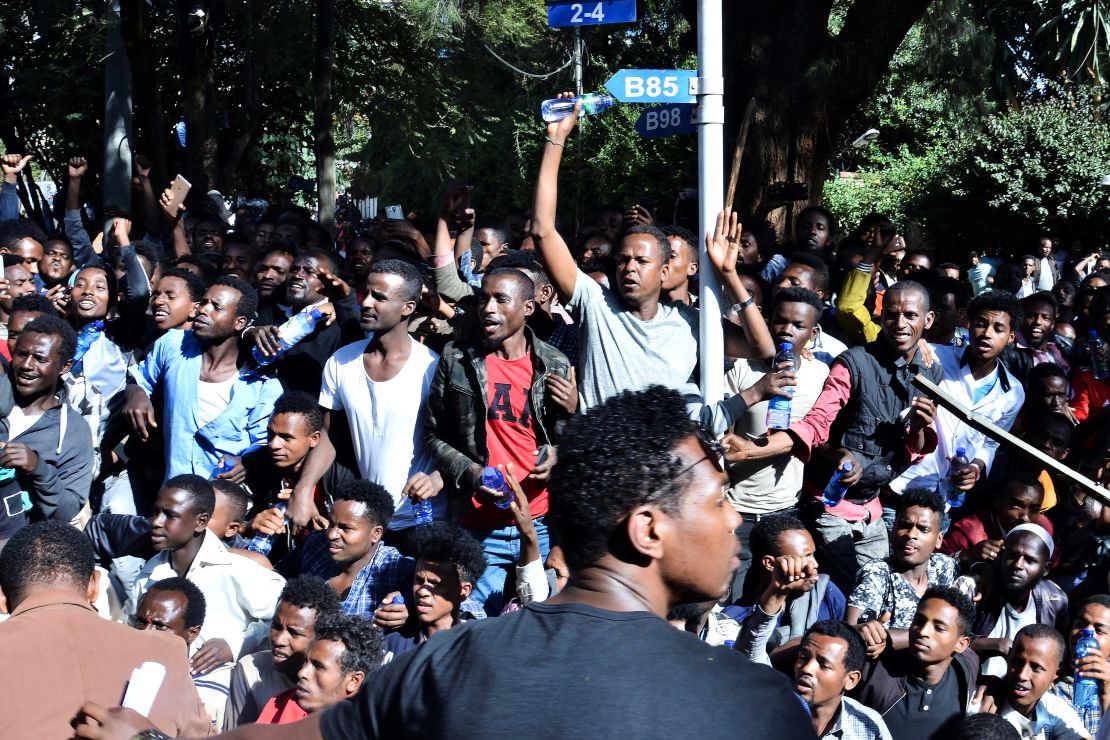
At the beginning of this month, dozens were killed in massive protests sparked by the death of the singer and activist Hachalu Hundressa. He was a legendary figure in the Oromo ethnic group, who say they are being politically marginalized in the country.
Critics have accused Prime Minister Abiy of failing to control ethnic violence in the country, despite being awarded a Nobel Peace prize in 2019 for his role in ending a 20-year civil war between Ethiopia and Eritrea.
The dam project has therefore become a source of national pride. It is entirely self-funded, 20% through bonds and 80% from Ethiopian taxpayers, and it is showing some success in uniting the country. The hashtag #ItsMyDam trended on Twitter in Ethiopia last week.
“The Ethiopian Renaissance Dam is a national project that [got] the support of the government, opposition parties and the public as well. It has been a uniting force in Ethiopia, as it has been built by Ethiopians’ money,” Addisu Lashitew, a fellow with the Global Economy and Development program at the Brookings Institute, told CNN.
Despite what seemed like an end to the negotiations last week, the three countries have agreed to meet again this week. “There is no other way than coming to an agreement,” Lashitew added.
CNN’s Sarah El Sirgany, Bethlehem Feleke, Mostafa Salem and Tefera Ghedamu contributed to this report.

